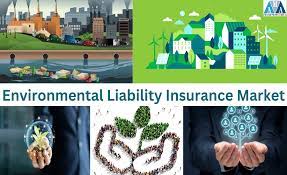Environmental liability insurance, also known as pollution liability insurance or environmental impairment liability insurance, provides coverage for liabilities arising from pollution or environmental damage. Here’s how you can obtain environmental liability insurance:
-
Research Insurance Providers: Start by researching insurance companies that offer environmental liability insurance policies. Look for insurers with experience in this specialized area and a strong track record of handling environmental claims.
-
Understand Coverage: Understand what types of environmental liabilities are covered under the policy. Environmental liability insurance typically covers costs associated with pollution clean-up, legal defense expenses, third-party bodily injury or property damage claims, and regulatory fines or penalties.
-
Assess Your Needs: Determine if environmental liability insurance is necessary for your situation. Consider factors such as the nature of your business, the risk of environmental contamination or pollution, and regulatory requirements in your industry.
-
Compare Policies: Compare environmental liability insurance policies from different providers to find one that meets your needs and budget. Consider factors such as coverage limits, premium costs, exclusions, and policy terms.
-
Contact Insurance Companies: Reach out to the insurance companies you’re interested in and request quotes for environmental liability insurance policies. Provide relevant information about your business operations, potential environmental risks, and desired coverage limits.
-
Review Policy Options: Review the policy options provided by insurance companies, paying close attention to the coverage details, premium costs, and any exclusions or limitations.
-
Apply for Coverage: Once you’ve selected an environmental liability insurance policy, complete the application process. You may need to provide information about your business operations, risk management practices, and environmental compliance efforts.
-
Undergo Risk Assessment: Some insurance companies may require a risk assessment of your business operations and environmental management practices before issuing coverage. This assessment helps determine the level of risk and appropriate coverage limits.
-
Wait for Approval: After submitting your application and undergoing any necessary risk assessments, wait for the insurance company to review and approve your coverage. The approval process may vary depending on the insurer and the complexity of your application.
-
Pay Premiums: If your application is approved, you’ll need to pay the premiums for your environmental liability insurance policy. Premiums are typically based on factors such as the size and nature of your business, the level of risk, and the coverage limits selected.
-
Receive Policy Documents: Once you’ve paid your premiums, you’ll receive your environmental liability insurance policy documents. Review the documents carefully to ensure that they accurately reflect the coverage you’ve selected and understand any terms or conditions.
-
Keep Policy Updated: Keep your environmental liability insurance policy updated by notifying the insurance company of any changes to your business operations, environmental risks, or coverage needs. It’s also essential to continue paying your premiums to keep your coverage active.
By following these steps, you can obtain environmental liability insurance to protect your business against the financial consequences of environmental contamination, pollution, or regulatory violations. Environmental liability insurance provides peace of mind and helps mitigate the risks associated with environmental liabilities.Obtaining environmental liability insurance involves several steps, including assessing your business needs, researching potential insurers, and preparing the necessary documentation. Here is a detailed guide:
1. Assess Your Business Needs
- Identify Risks: Evaluate the potential environmental risks associated with your business operations. Consider factors such as hazardous materials handling, waste disposal, emissions, and potential for spills or contamination.
- Coverage Requirements: Determine the type and amount of coverage needed. This might include coverage for cleanup costs, legal fees, third-party bodily injury, and property damage.
2. Research Insurers
- Specialized Insurers: Look for insurers that specialize in environmental liability insurance. These insurers often have a better understanding of environmental risks and regulations.
- Compare Policies: Obtain quotes and compare policies from multiple insurers. Pay attention to coverage limits, exclusions, deductibles, and premium costs.
- Check Ratings and Reviews: Research the financial stability and customer reviews of potential insurers to ensure they are reliable and capable of handling claims.
3. Consult with a Broker
- Insurance Broker: Consider working with an insurance broker who specializes in environmental liability insurance. Brokers can help you navigate the complexities of different policies and find the best coverage for your needs.
4. Prepare Documentation
- Business Information: Gather detailed information about your business, including the nature of your operations, location, and any previous environmental incidents or claims.
- Risk Management Practices: Provide information on your risk management practices and any measures you have in place to mitigate environmental risks. This might include safety protocols, staff training programs, and environmental audits.
- Regulatory Compliance: Ensure you are in compliance with all relevant environmental regulations and provide documentation to support this.
5. Application Process
- Complete Application: Fill out the insurance application form provided by the insurer or broker. Be thorough and accurate in your responses.
- Site Inspections: Be prepared for site inspections or additional assessments that the insurer may require to evaluate the risks associated with your business.
6. Review and Finalize Policy
- Policy Review: Carefully review the terms and conditions of the policy before finalizing. Ensure that all agreed-upon coverage and terms are accurately reflected in the policy documents.
- Negotiate Terms: If necessary, negotiate terms with the insurer to ensure the policy meets your needs.
- Bind Coverage: Once you are satisfied with the policy, bind the coverage by signing the necessary documents and paying the premium.
7. Ongoing Management
- Maintain Compliance: Continuously monitor and maintain compliance with environmental regulations to minimize risks.
- Regular Reviews: Periodically review your insurance coverage to ensure it remains adequate as your business evolves and environmental regulations change.
- Claims Management: In the event of an environmental incident, promptly report the claim to your insurer and follow their procedures for handling claims.
By following these steps, you can secure environmental liability insurance that protects your business from potential environmental risks and liabilities.

